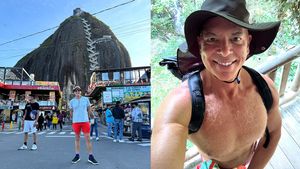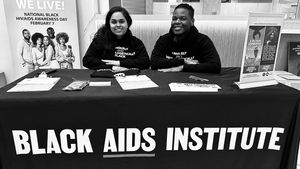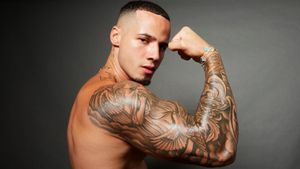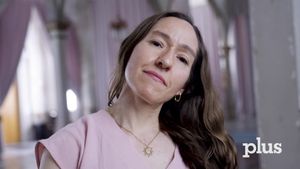There has always been a shortage of queer-lady-spaces in even the gayest cities in the United States. (As a member of this demographic, I may be biased—but seriously, what’s a queer gotta do to sing some karaoke with other queers?) However, even the cities with historical lesbian bars have been watching them close their doors in the past few years. DC, San Francisco, New York, and L.A., places you would think had higher concentration of LGBT ladies, have all been closing their women's bars, many due to low turnout and lack of funds.
The question stands—why all of a sudden do we not crave ladies-only spaces? Is it because historic lesbian bars are being pushed out of quickly-gentrifying gay neighborhoods, or being looked over for those gay neighborhoods? Are lesbians and bi women becoming more comfortable in gay male spaces and are more likely to simply go to a male-dominated bar if it’s more convenient? Did the pre-L Word generation grow up and settle down and what’s left of us would rather use Tinder? (And why, pray tell, did I join a gay kickball league to show up to the first practice and realize I was the only girl among 21 gay men?)
The most recent impactful closing of a women's bar was in San Francisco. The only remaining bar for queer women in the city affectionately known as “gay Mecca”, the Lex, shut its doors due to rising rent and declining patronage after 18 years of service. In an article for the Huffington Post, Jen Jack Gieseking attributes this closing to the gentrification of the neighborhood, stating, “Since the 1980s, it has become common knowledge that gays and artists are evidence of a city's burgeoning economy and culture… At the same time, the working and working-middle class, most often people of color, are forced to move out of these same areas while condos replace smaller housing for more affluent, white residents. Left out of this narrative is women's stories, which the closing of a lesbian bar in a supposedly LGBTQ hub like San Francisco amplifies.” As this gay male-driven gentrification displaces working class people of color, so it does the smaller sub-sets of the less affluent LGBTQ community.
A similar thing happened in Los Angeles in 2013 when West Hollywood’s only lesbian bar, the Palms closed after 46 years. While West Hollywood boasts 40% of its population identifying as LGBTQ, only 3% identifies specifically as lesbian. This makes a case for the desperate need for such a small niche to continue to patronize its watering hole. When you cater to only 3% of the population, losing any amount of those people (whether they are finding other places to dine and drink or simply moving to the suburbs) can be devastating. The owners of the Palms announced that they hoped to re-open, perhaps in another neighborhood, but there has been no word on that yet.
DC’s queer women scene has been off and on with the sporadic closings of the historic lesbian bar, Phase 1. Phase’s Dupont location was abruptly closed in 2013 and survived by its sister in Eastern Market, which has suffered multiple closes and re-openings. Phase’s owner, Allen Carroll, stated that the closing was to re-do the space, but patrons of Phase 1 have all noticed the lack of crowds on a Saturday night. (Phase Fest 2014 featuring bands like Hunter Valentine and Sick of Sarah drew quite a crowd, but an average night involves maybe a few girls around the pool table or some underwhelming karaoke.) Meanwhile, the vodka sodas flow freely at DC’s biggest gay male sports bar, Nellie’s, which is in a more expensive, gentrified neighborhood and features multiple levels and a rooftop bar.
For a while, DC’s lady scene seemed to become a travelling show, where women congregated at various gay bars once a month on their lesbian night. One of the biggest events, SheRex at Chief Ike’s in Adam’s Morgan, ceased to exist last year despite usually turning out a substantial crowd. SheRex is survived by GlittHER, a once a month ladies’ night in the up and coming Columbia Heights.
At least coming from a girl who lives in DC, I think queer women culture has become more finger-on-the-pulse in that where you want to be changes every week. Perhaps nightlife is no longer the way to go. Women still have their weekly or monthly events in the form of ladies’ nights, queer gatherings (such as DC’s Busboys & Poets) and our increased presence on social media and dating apps. Sure, we can still seek each other out, but what we need is a classic brick and mortar safe space where we can go in the hopes to relax with people like us. I’m thinking a (real-life) revival of The Planet where I can kiss my girl over coffee on a regular, unexamined basis, or a more convenient, hip, and homier girl-dominated bar. There may be less of us than gay men, but we are certainly not lacking in gaiety.






























































































 Cindy Ord/Getty Images
Cindy Ord/Getty Images

























